-
 bitcoin
bitcoin $103163.554157 USD
-3.05% -
 ethereum
ethereum $3440.538470 USD
-4.50% -
 tether
tether $0.999930 USD
0.00% -
 xrp
xrp $2.408381 USD
-5.38% -
 bnb
bnb $962.292695 USD
-3.83% -
 solana
solana $155.202339 USD
-7.60% -
 usd-coin
usd-coin $1.000166 USD
0.01% -
 tron
tron $0.298210 USD
0.35% -
 dogecoin
dogecoin $0.172672 USD
-5.44% -
 cardano
cardano $0.558494 USD
-6.71% -
 hyperliquid
hyperliquid $38.819383 USD
-5.91% -
 chainlink
chainlink $15.335896 USD
-7.06% -
 bitcoin-cash
bitcoin-cash $507.908940 USD
-3.06% -
 stellar
stellar $0.282633 USD
-6.38% -
 unus-sed-leo
unus-sed-leo $9.242665 USD
0.58%
MA移动平均粘附力代表什么?如何预测随后的趋势?
MA moving average adhesion occurs when a crypto's price closely follows a moving average, indicating trend strength and potential future movements.
2025/05/23 06:07
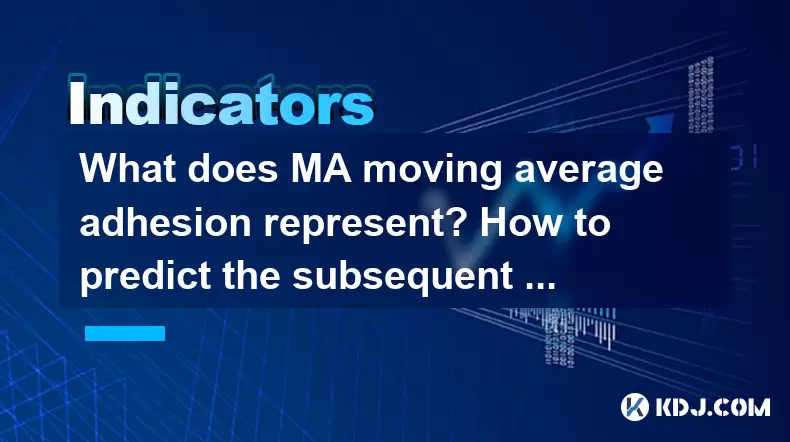
MA移动平均值是什么?
MA移动平均值是指该现象,即加密货币的价格紧随特定的移动平均线。这可以看作是价格拥抱,弹跳或受移动平均值影响的价格。移动平均水平通常用作技术指标,可帮助交易者确定趋势和潜在的逆转点。对移动平均线的粘附可以表明当前趋势的强度,并提供对未来价格变动的见解。
移动平均类型
移动平均值有多种形式,最常见的是简单的移动平均线(SMA)和指数移动平均线(EMA)。
简单的移动平均值(SMA):这是通过在特定数量的时间内拿出给定价格集的算术平均值来计算得出的。例如,50天的SMA是过去50天的平均收盘价。
指数移动平均线(EMA):这使最近的价格增加了重量,使其对新信息的反应更快。与SMA相比,EMA可以更快地帮助交易者捕捉趋势。
识别MA粘附
为了识别MA粘附,交易者通常会观察价格如何随着时间的推移与所选移动平均值相互作用。以下是粘附的一些迹象:
- 紧贴MA的价格:价格仍然非常接近移动平均线,而没有很大的偏差。
- 弹跳MA:价格经常接触移动平均线,然后反弹,表明MA充当支撑或阻力水平。
- MA之后的价格:价格趋势紧密反映了移动平均值的方向,这表明MA正在指导价格转移。
使用MA粘附预测随后的趋势
基于MA粘附的预测后续趋势包括了解价格如何与移动平均线相互作用,并使用此信息来做出明智的交易决策。以下是一些预测趋势的方法:
趋势延续:如果价格继续遵守向上或向下移动的平均值,则表明当前趋势可能会持续存在。交易者可能会寻找机会以趋势方向进行交易。
突破和逆转:突然脱离移动平均线可以表明潜在的趋势逆转或突破。交易者应在这些突破期间关注大幅度增加的数量作为确认。
支持和阻力水平:如果移动平均值充当强大的支持或阻力水平,则交易者可以使用此信息来设置停止损失订单或额外利润水平。
使用MA粘附进行预测的实例
让我们浏览一个实用的例子,说明如何使用MA粘附来预测Bitcoin等加密货币中的后续趋势。
选择移动平均值:首先选择与您的交易策略保持一致的移动平均值。在此示例中,让我们使用50天的EMA。
观察价格交互:监视Bitcoin的价格如何随着时间的推移与50天EMA相互作用。如果价格始终如一地拥抱EMA,则表明粘附力很强。
识别趋势:如果Bitcoin的价格在50天EMA之后趋向上升并紧密相关,这表明是看涨的趋势。相反,如果价格下降并遵守EMA,则表明看跌趋势。
寻找突破:查看价格从EMA中断出来的实例。在上升趋势期间,EMA上方的突破可能标志着看涨趋势的延续,而在下降趋势期间,EMA下方的突破可能会证实看跌趋势。
设置交易参数:基于观察到的粘附和潜在的突破,设定的入口点,停止损失水平和额外利润目标。例如,如果价格在上升趋势期间拥抱50天的EMA,请考虑进入EMA附近的长位置,而在EMA下方停止损坏。
工具和指标以增强MA粘附分析
为了增强对MA粘附的分析,请考虑使用其他技术指标和工具:
音量指标:突破或逆转期间的高交易量可以确认移动的强度。
相对强度指数(RSI):这种动量振荡器可以帮助识别过多的或超售的条件,这可以补充MA粘附信号。
移动平均收敛差异(MACD):此趋势跟随动量指标可以帮助确认MA粘附所指示的趋势的方向。
常见问题
问:可以将MA粘附用于短期交易吗?答:是的,可以通过专注于较短的时间范围并使用较短的移动平均值(例如10天或20天的EMA)来用于短期交易。交易者应意识到,较短的时间范围可能会更加波动,并且需要更快的决策。
问:不同的加密货币如何影响MA粘附的可靠性?答:由于市场流动性,波动性和交易量等因素,MA粘附的可靠性可能会因不同的加密货币而异。与较少的液体替代币相比,Bitcoin和以太坊等液体和广泛的加密货币往往表现出更可靠的MA粘附模式。
问:仅依靠MA粘附来进行交易决策的风险是什么?答:仅依靠MA粘附可能会有风险,因为它不能解决其他市场因素,例如新闻事件,监管变化或更广泛的市场情绪。与其他技术指标和基本分析一起制定全面的交易决策,将MA粘附与其他技术指标结合使用至关重要。
问:使用MA粘附时,交易者如何避免错误信号?答:为避免使用错误的信号,交易者应使用多个时间范围进行分析,并入其他技术指标,例如RSI和MACD,并注意交易量。此外,设定明确的风险管理规则,例如停止损失订单,可以帮助减轻虚假信号的影响。
免责声明:info@kdj.com
所提供的信息并非交易建议。根据本文提供的信息进行的任何投资,kdj.com不承担任何责任。加密货币具有高波动性,强烈建议您深入研究后,谨慎投资!
如您认为本网站上使用的内容侵犯了您的版权,请立即联系我们(info@kdj.com),我们将及时删除。
- 狗狗币、投资者、知识:驾驭 2025 年 Meme 币狂热
- 2025-11-13 00:40:00
- 密西西比州零售商和便士困境:现金客户该怎么办?
- 2025-11-13 01:00:02
- 超流动性、Aster 鲸鱼和零知识证明:加密货币的新时代?
- 2025-11-13 01:20:01
- XRP 与加密货币预售:Digitap 或 LivLive 能否带来 100 倍的回报?
- 2025-11-13 01:15:01
- Hedera、受监管资产和双代币灵活性:代币化的新时代
- 2025-11-13 01:45:01
- XRP、卡尔达诺和山寨币竞技场:现在最热门的是什么?
- 2025-11-13 01:25:03
相关百科

学习 TRIX 指标的最佳方法是什么?
2025-11-10 12:39:58
了解 TRIX 指标的基础知识1. TRIX(三重指数平均线)指标是一种动量震荡指标,旨在过滤短期波动并识别价格变动的长期趋势。它通过对收盘价应用三重指数平滑来实现这一点,这有助于交易者关注重大方向变化而不是噪音。 2. 要开始学习 TRIX,请研究其数学基础 — 它如何计算价格数据的三个连续指数移...
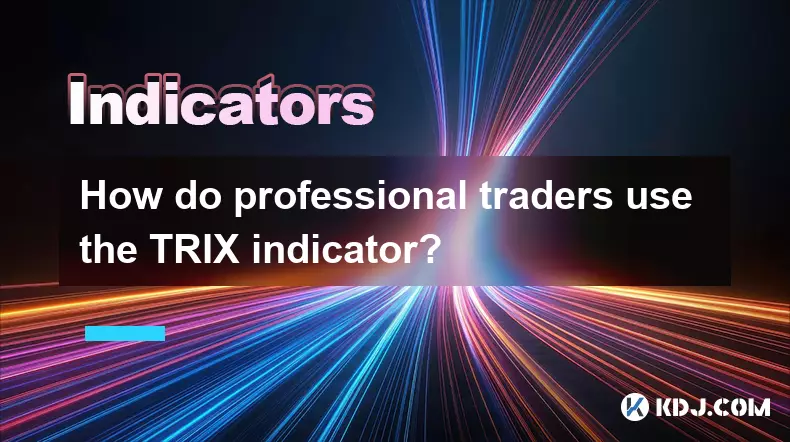
专业交易者如何使用 TRIX 指标?
2025-11-06 16:40:06
了解加密货币交易中的 TRIX 指标TRIX(三重指数平均线)指标是专业交易者用来识别趋势、发现潜在反转并过滤市场噪音的动量震荡指标。它计算三重平滑指数移动平均线的变化率,使其对长期趋势高度敏感,同时最大限度地减少短期波动。在快速发展的加密货币市场中,价格波动可能会非常剧烈,TRIX 可以帮助专业人...
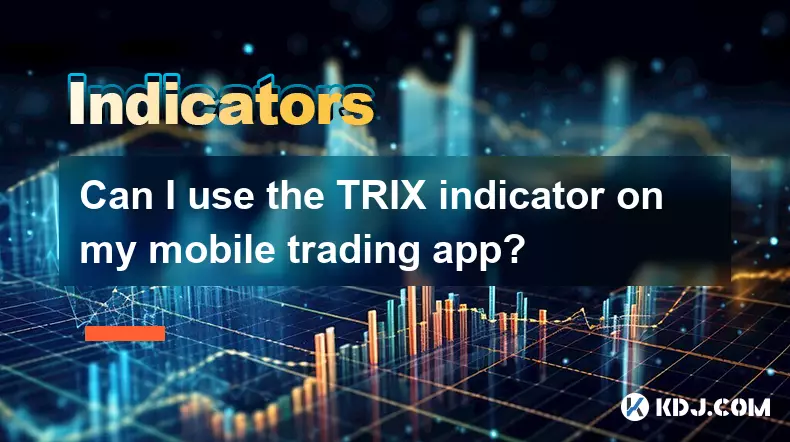
我可以在我的移动交易应用程序上使用 TRIX 指标吗?
2025-11-07 19:40:05
TRIX 指标是一种动量振荡器,旨在过滤短期波动并突出长期趋势,在加密货币交易者中越来越受欢迎。随着移动交易的日益普及,用户经常寻求确认是否可以在其手持设备上访问 TRIX 等技术工具。将先进指标集成到移动应用程序中反映了数字资产交易平台的更广泛发展。与移动交易平台的兼容性1. 大多数主要的加密货币...
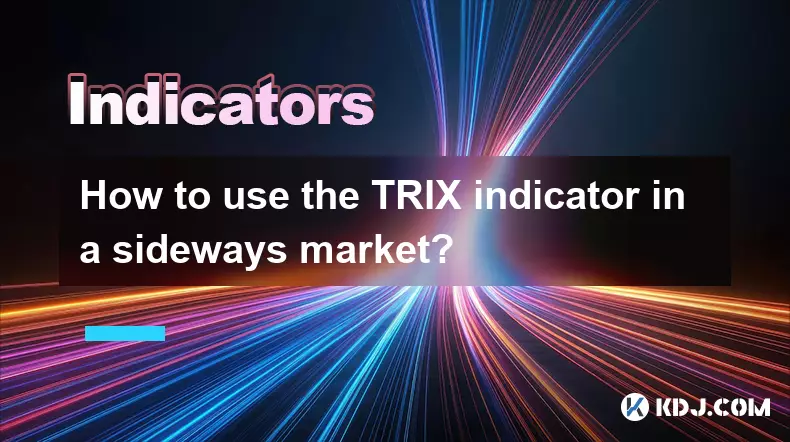
如何在横盘市场中使用TRIX指标?
2025-11-10 15:00:27
Bitcoin 在去中心化金融演变中的作用1. Bitcoin仍然是去中心化金融的基石,既是价值储存手段,又是新兴数字资产的基准。其网络安全性由工作量证明共识驱动,设定了新区块链经常尝试复制的标准。 2. 通过 WBTC 等包装代币,加速了 Bitcoin 与 DeFi 生态系统的整合,使 BTC ...
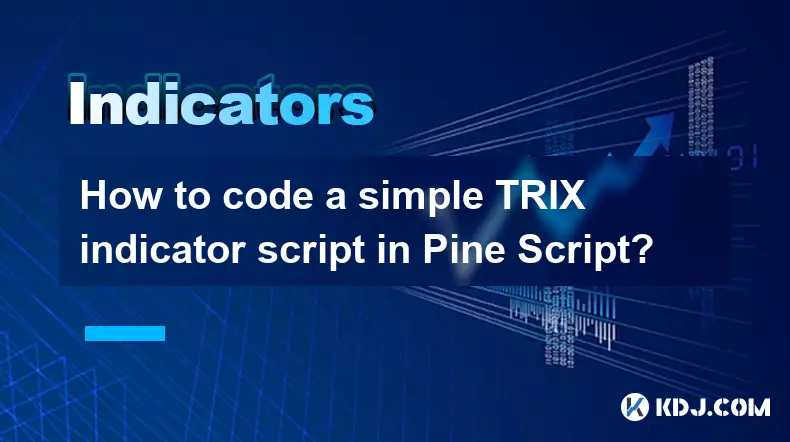
如何在 Pine Script 中编写简单的 TRIX 指标脚本?
2025-11-07 06:20:17
如何在 Pine 脚本中编写简单的 TRIX 指标TRIX(三重指数移动平均线)指标广泛用于加密货币交易中,以识别动量和潜在逆转。它计算三重平滑指数移动平均线的变化率,过滤掉较小的价格波动。在 Pine Script 中,编写该指标的基本版本涉及应用多个 EMA 层并导出百分比变化。了解 TRIX ...
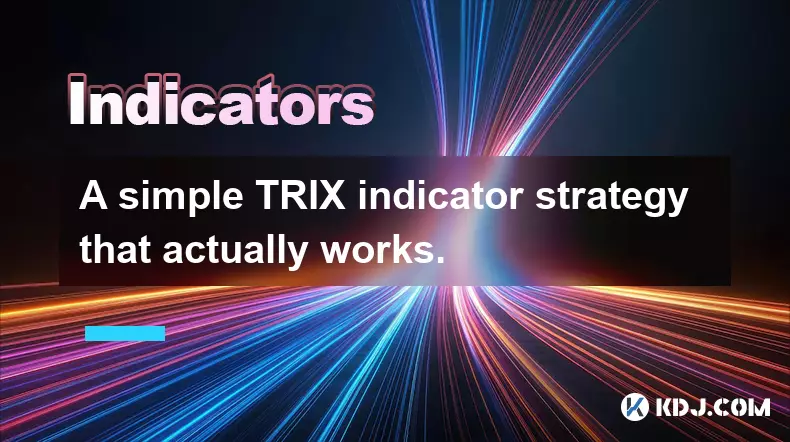
一个实际有效的简单 TRIX 指标策略。
2025-11-08 17:39:43
了解加密货币交易中的 TRIX 指标1. TRIX(三重指数平均线)指标是一种动量震荡指标,旨在过滤短期波动并突出长期趋势。它计算三重平滑指数移动平均线的变化率,使其能够非常有效地识别加密货币市场的趋势逆转和动量转变。 2. 与标准移动平均线不同,TRIX 应用三次指数平滑,从而减少噪音并最大限度地...

学习 TRIX 指标的最佳方法是什么?
2025-11-10 12:39:58
了解 TRIX 指标的基础知识1. TRIX(三重指数平均线)指标是一种动量震荡指标,旨在过滤短期波动并识别价格变动的长期趋势。它通过对收盘价应用三重指数平滑来实现这一点,这有助于交易者关注重大方向变化而不是噪音。 2. 要开始学习 TRIX,请研究其数学基础 — 它如何计算价格数据的三个连续指数移...

专业交易者如何使用 TRIX 指标?
2025-11-06 16:40:06
了解加密货币交易中的 TRIX 指标TRIX(三重指数平均线)指标是专业交易者用来识别趋势、发现潜在反转并过滤市场噪音的动量震荡指标。它计算三重平滑指数移动平均线的变化率,使其对长期趋势高度敏感,同时最大限度地减少短期波动。在快速发展的加密货币市场中,价格波动可能会非常剧烈,TRIX 可以帮助专业人...

我可以在我的移动交易应用程序上使用 TRIX 指标吗?
2025-11-07 19:40:05
TRIX 指标是一种动量振荡器,旨在过滤短期波动并突出长期趋势,在加密货币交易者中越来越受欢迎。随着移动交易的日益普及,用户经常寻求确认是否可以在其手持设备上访问 TRIX 等技术工具。将先进指标集成到移动应用程序中反映了数字资产交易平台的更广泛发展。与移动交易平台的兼容性1. 大多数主要的加密货币...

如何在横盘市场中使用TRIX指标?
2025-11-10 15:00:27
Bitcoin 在去中心化金融演变中的作用1. Bitcoin仍然是去中心化金融的基石,既是价值储存手段,又是新兴数字资产的基准。其网络安全性由工作量证明共识驱动,设定了新区块链经常尝试复制的标准。 2. 通过 WBTC 等包装代币,加速了 Bitcoin 与 DeFi 生态系统的整合,使 BTC ...

如何在 Pine Script 中编写简单的 TRIX 指标脚本?
2025-11-07 06:20:17
如何在 Pine 脚本中编写简单的 TRIX 指标TRIX(三重指数移动平均线)指标广泛用于加密货币交易中,以识别动量和潜在逆转。它计算三重平滑指数移动平均线的变化率,过滤掉较小的价格波动。在 Pine Script 中,编写该指标的基本版本涉及应用多个 EMA 层并导出百分比变化。了解 TRIX ...

一个实际有效的简单 TRIX 指标策略。
2025-11-08 17:39:43
了解加密货币交易中的 TRIX 指标1. TRIX(三重指数平均线)指标是一种动量震荡指标,旨在过滤短期波动并突出长期趋势。它计算三重平滑指数移动平均线的变化率,使其能够非常有效地识别加密货币市场的趋势逆转和动量转变。 2. 与标准移动平均线不同,TRIX 应用三次指数平滑,从而减少噪音并最大限度地...
查看所有文章










































































